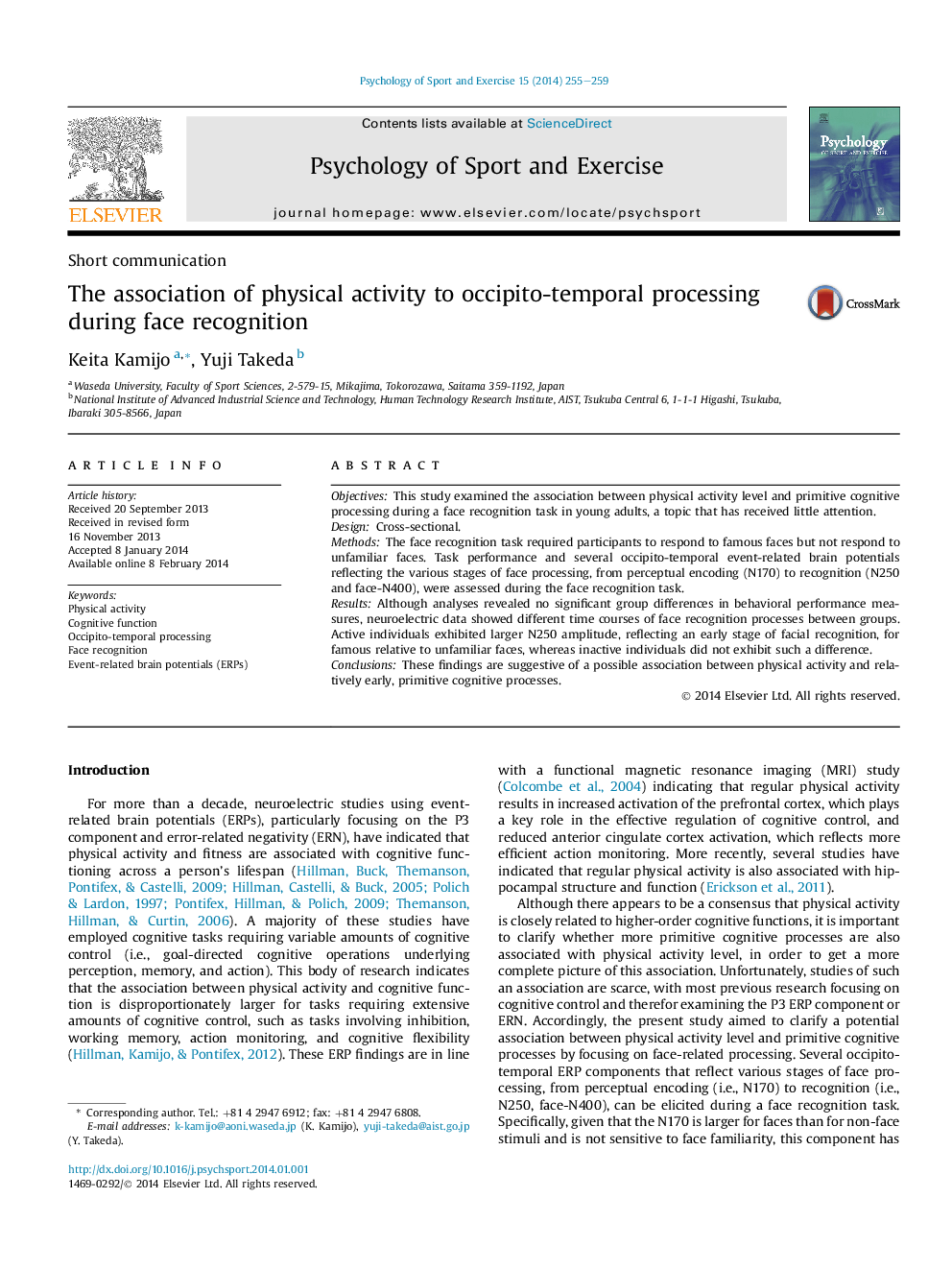| کد مقاله | کد نشریه | سال انتشار | مقاله انگلیسی | نسخه تمام متن |
|---|---|---|---|---|
| 894366 | 1472117 | 2014 | 5 صفحه PDF | دانلود رایگان |
• The relation of physical activity level to face recognition processes was examined.
• Occipito-temporal ERPs during a face recognition task were used as indices.
• The processes indexed by the ERPs differed based on physical activity level.
• Results suggest physical activity is associated with occipito-temporal processing.
ObjectivesThis study examined the association between physical activity level and primitive cognitive processing during a face recognition task in young adults, a topic that has received little attention.DesignCross-sectional.MethodsThe face recognition task required participants to respond to famous faces but not respond to unfamiliar faces. Task performance and several occipito-temporal event-related brain potentials reflecting the various stages of face processing, from perceptual encoding (N170) to recognition (N250 and face-N400), were assessed during the face recognition task.ResultsAlthough analyses revealed no significant group differences in behavioral performance measures, neuroelectric data showed different time courses of face recognition processes between groups. Active individuals exhibited larger N250 amplitude, reflecting an early stage of facial recognition, for famous relative to unfamiliar faces, whereas inactive individuals did not exhibit such a difference.ConclusionsThese findings are suggestive of a possible association between physical activity and relatively early, primitive cognitive processes.
Journal: Psychology of Sport and Exercise - Volume 15, Issue 3, May 2014, Pages 255–259
